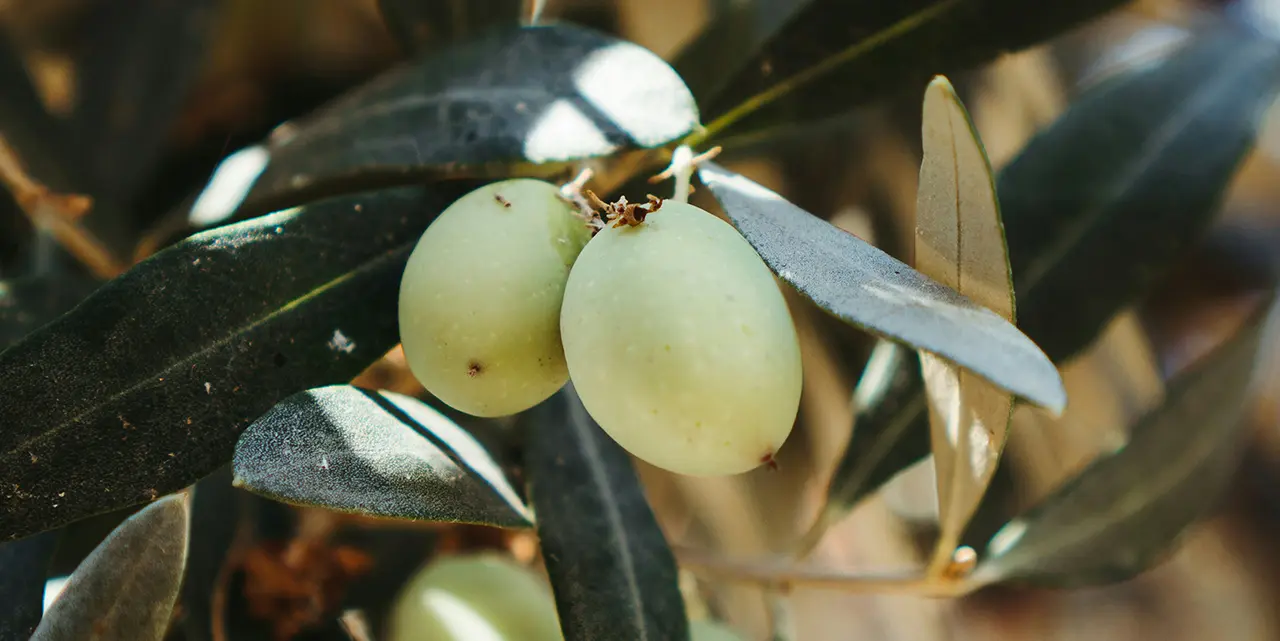
The Tal-Bajda olive, once nearly extinct, is a unique, pale fruit with a rich history in Maltese cuisine. Rescued by passionate growers, its quiet, delicate flavour stands out in a world of bold claims and overproduction, reminding us of the importance of preserving traditional tastes.
Some things don’t shout for attention. They sit quietly at the edge of memory—familiar, but faint. Pale, almost. Like they were never quite meant to survive.
The Tal-Bajda olive is one of those things.
You could walk past a Tal-Bajda tree and not notice it. The fruit isn’t the deep, oily green of a Sicilian nocellara or the smoky violet of a French picholine. These olives are soft and ghostly—a whitish-pink, as if someone pressed pause just before they turned black.
Even the name, Tal-Bajda, carries that quietness. It comes from the Arabic word for “white.” And for years, these olives nearly disappeared from the island that once prized them most.
Back in the time of the Knights of St John, these pale fruits were known as “Maltese pearls.” They weren’t just a curiosity—they were a delicacy, tucked into stews and preserved for winter tables. Records show they were used in fenek bit-tewm u l-ħwawar—the traditional rabbit dish still cooked across Malta today.
But over time, they slipped into obscurity. New cultivars came in, modern farming shifted focus, and the Tal-Bajda was left to the edges of old gardens, untended. By the late 20th century, only a few trees remained—clinging on in silence.
It would have been easy to let them vanish completely. Plenty of things do. But a few people refused to forget.
One of them was Sam Cremona, a passionate olive grower who believed that some flavours are worth saving—not just for tradition’s sake, but because they tell you something no other flavour can. He helped launch a project to identify and propagate the surviving Tal-Bajda trees, collecting cuttings, studying the DNA, and planting hope back into Maltese soil.
What they found was extraordinary: the Tal-Bajda wasn’t just old—it was genetically unique. Unlike any other olive cultivar in the Mediterranean. A native, in the truest sense of the word.
You won’t find jars of Tal-Bajda in your local supermarket. There’s no industrial supply line, no export market, no influencer telling you to drizzle their oil on your sourdough.
These olives are quiet survivors. Cultivated carefully, eaten mostly on the island, passed hand to hand, meal to meal.
They’re usually preserved whole—cured, marinated, sometimes stuffed, rarely pressed. The oil they do yield is said to be lighter, sweeter, softer than expected. Less punch, more grace. And maybe that’s what makes them special: in a world of bold claims and overproduction, these olives whisper.
Standing in an old Maltese grove, it’s hard not to wonder how many other tastes we’ve nearly erased. Not through malice—just through neglect. Through assuming that what’s rare is simply unnecessary.
But the Tal-Bajda is a reminder that rarity often means resilience. That something doesn’t have to dominate a market to matter. It can simply persist—tethered to place, to memory, to a community that decides it’s still worth picking.
And that’s the beautiful irony: the olive that almost vanished became a symbol of what it means to belong.
There’s a certain humility in a fruit that refuses to darken. That stays pale, subtle, and somehow unmistakable. Like a memory you thought you’d forgotten, until it arrives at your table, salted, oiled, and unexpectedly familiar.
The Tal-Bajda olive may not feed nations or win taste awards—but it feeds something else. A sense of rootedness. A taste of what was. And maybe, if we’re lucky, a reminder of what still could be.

At Med.kitchen, our passion lies in crafting exceptional culinary experiences through our online platform. We specialise in sharing a wealth of knowledge via articles, recipes, courses, and online mentoring, aiming to inspire both novice and seasoned chefs alike. Our focus has shifted from private dining to being an online source of gastronomic inspiration, allowing you to explore and refine your culinary skills from the comfort of your home..